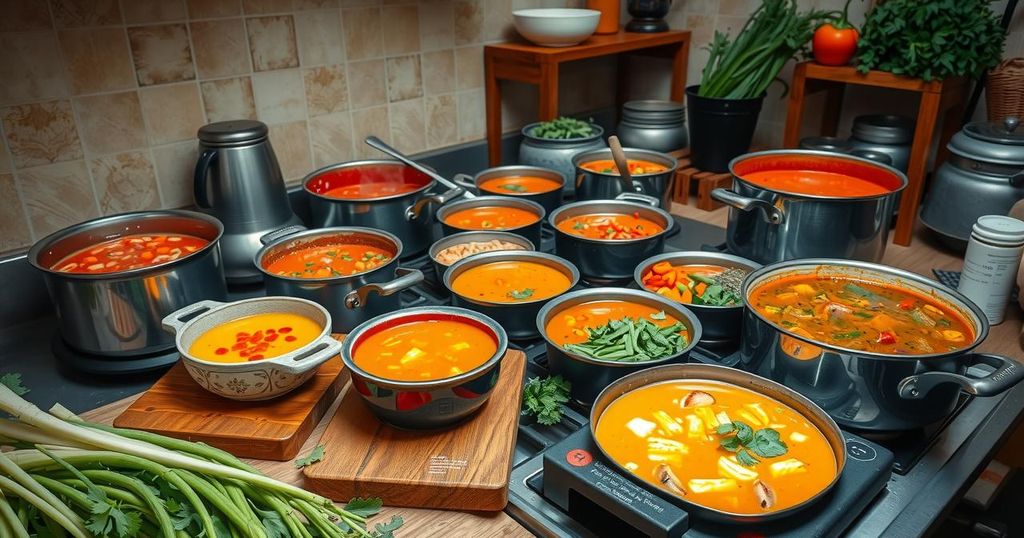The Culinary Legacy of Chorizo in Toluca, Mexico State
Toluca, Mexico State, is famed for its chorizo, a culinary staple with a history dating back to Spanish colonization in the 16th century under Hernán Cortés. The production of chorizo rojo and the more modern chorizo verde reflect local ingredients and methods. Chorizo serves as a key element in numerous dishes and continues to symbolize the region’s culinary legacy. Upcoming events, such as Expo Chorizo, celebrate this unique tradition in Mexican cuisine.
Mexico State, particularly its capital city Toluca, is renowned for its chorizo, an iconic ingredient that has enriched countless dishes for 500 years. This long-standing tradition of chorizo production dates back to the early years of Spanish colonization in the 16th century, when Hernán Cortés introduced livestock to the region, notably pigs, which he carefully raised to create high-quality sausages.
The distinction between Spanish and Mexican chorizo lies primarily in the ingredients used and the methods of preparation. While Spanish chorizo typically utilizes pork and pork fat, it was the introduction of native ingredients, such as corn and various chiles, that transformed the Mexican chorizo into a unique culinary product with a vibrant flavor and red coloration, mostly influenced by paprika and local chiles.
The evolution of chorizo in Toluca was notable after Cortés established his livestock operations by 1525. By the end of the 16th century, Toluca solidified its status as the chorizo hub of Mexico, being recognized alongside other pork products like bacon and chicharrón. An important historical event took place in 1713 when Toluca’s chorizo was featured at a grand feast in Mexico City, attesting to its cultural significance.
Today, chorizos from Toluca are categorized primarily into two versions: chorizo rojo and chorizo verde. The former is the traditional red chorizo made from pork, while the latter, which gained popularity in the late 20th century, incorporates herbs, spices, and tomatillos for its distinct green color, representing the recent culinary innovations of the region.
Longaniza, another sausage originating from Spain, is also produced in Mexico, but it features different characteristics in color and size. Unlike chorizo, longaniza tends to be maroon due to achiote and is presented in longer shapes, differentiating it from the more commonly tied chorizo. Although longaniza verde is produced, it is not as prevalent.
Chorizo’s influence extends far beyond the borders of Mexico State, as it is an essential ingredient in a variety of regional dishes such as tacos, quesadillas, and even pizza. A signature regional sandwich, pambazo de chorizo con papas, serves as an excellent introduction to the local cuisine. The upcoming Expo Chorizo event in July 2025 will further celebrate this local delicacy.
The legacy of chorizo production in Toluca remains unmatched, with local artisans upholding a tradition that dates back centuries. The term “choricero” is often associated with Toluca, highlighting its significance in the region, where the quality and techniques of chorizo-making continue to thrive today, as evidenced by the passion of the local populace.
The rich history of chorizo in Toluca reflects a blend of Mexican and Spanish culinary traditions, resulting in a distinctive product that has become emblematic of the region. With its establishment as a center for chorizo production since the 16th century, Toluca has maintained its status through innovation and adherence to quality. Furthermore, chorizo’s culinary versatility ensures its continued popularity across a broad spectrum of dishes, while regional events highlight its cultural significance. The legacy of Toluca’s chorizo as a living tradition underscores its irreplaceable role in Mexican gastronomy.
Original Source: mexiconewsdaily.com




Post Comment